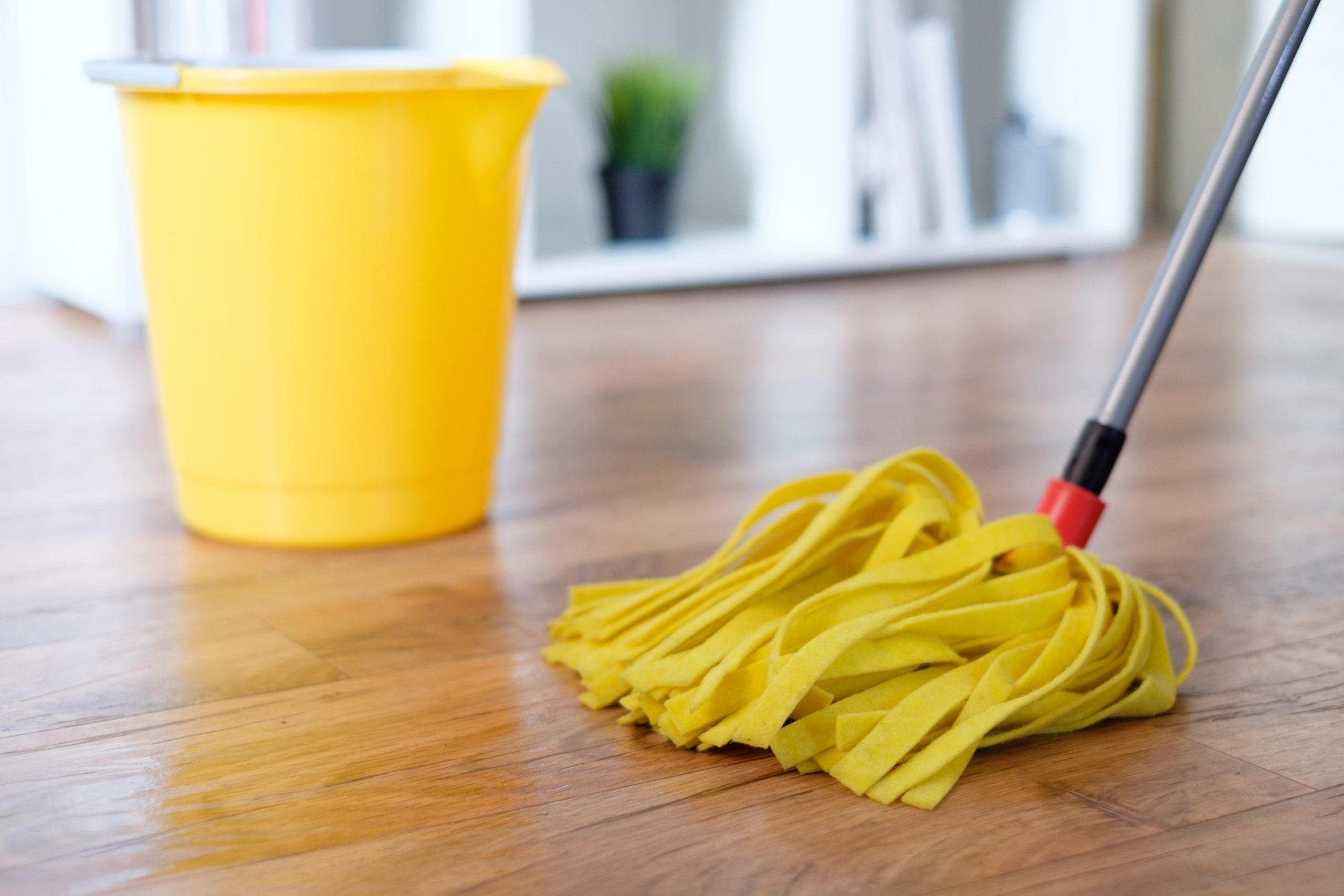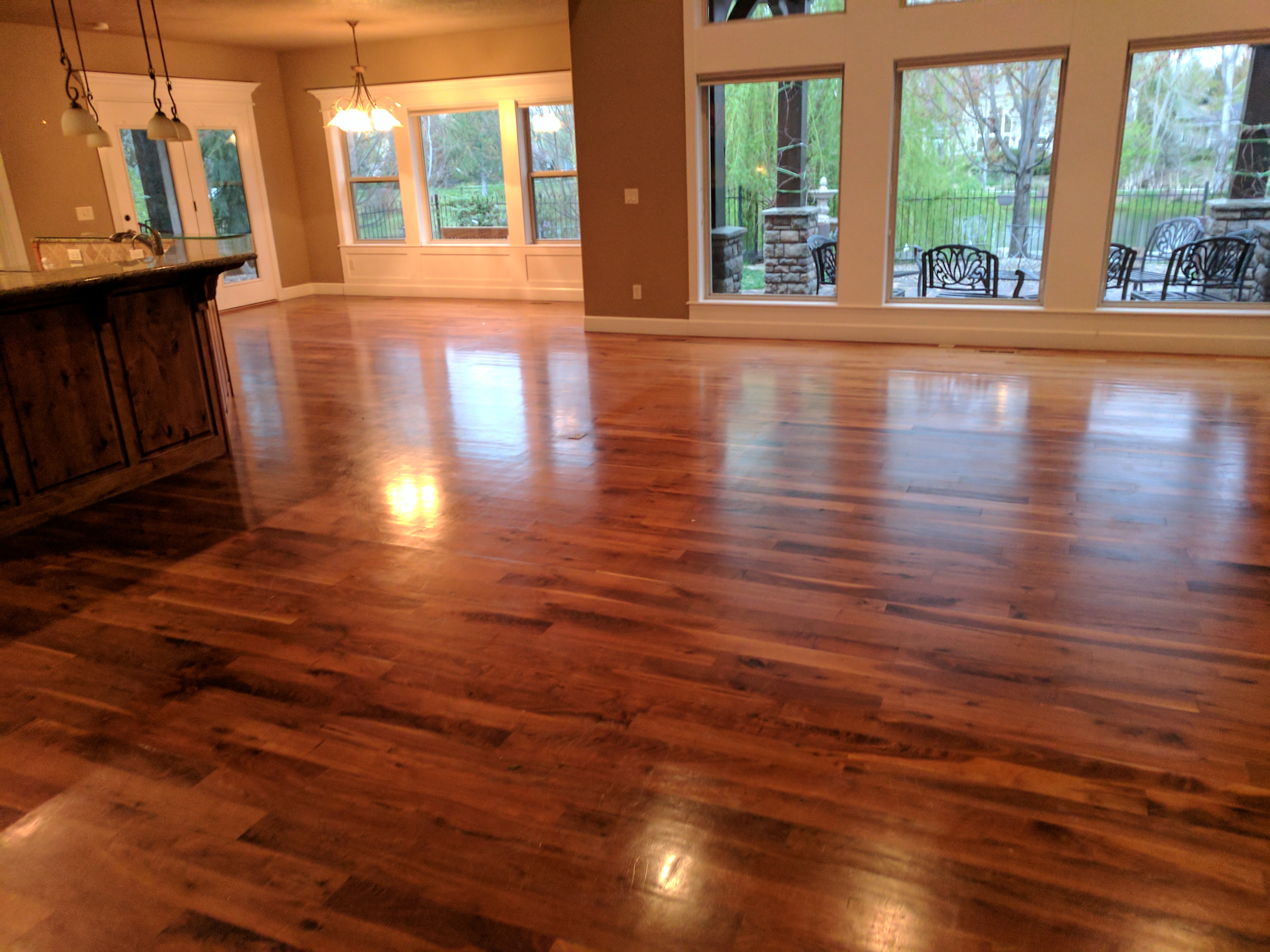Pet owners often have a lot of questions about what flooring types will work best for their household. Dogs and cats have different affects on flooring types. Depending on the type of pets you have, and your family’s needs some flooring types may be better for you thank others.
A common question we get about wood flooring options is “What can I have that will look beautiful without scratching?”. It is possible to get beautiful wood flooring or wood look flooring that stands up to pets and other abuse. Engineered hardwood flooring is a durable beautiful option, wood look tile has become popular and there are lots of high-quality vinyl products that work great in households with pets. Vinyl flooring is popular because it is waterproof and makes cleaning up pet messes easy.
Carpet is a common option and can be good for pets because it does not scratch but does have some issue because it stains easily. Dogs will likely not do much damage to your carpets structure but may track mud in, have house breaking accidents or stain the carpet another way. Cats can be a bad combination with carpet because they may scratch the carpet and damage it. If you have allergies carpet is likely not a good choice. Pollen, dirt, and pet dander can all get trapped in the carpet and exasperate your allergies or asthma.
Laminate is another common choice of flooring. Many people like laminate because it is affordable, but it can scratch and stain. Depending on the quality of your laminate it may scratch and dent very easily. Also, laminate is made of synthetic products which can add more VOCs than other hard surface flooring. The gassing off period can be unhealthy for your pets.
Vinyl is another common option and its not the same vinyl your parents had installed. The luxury vinyl products are beautiful and look extremely high end. They are durable and waterproof which makes them a great option for a lot of people. Vinyl is also made of synthetic products and can have increased VOCs which you will want to consider. Formaldehyde is commonly found in these products.
Engineered hardwood flooring is one of the top choices for homes with pets. The finish coats that are used on engineered wood are extremely durable and are a great option for homes with pets. Homeowners also like that planks can be replaced as necessary with these types of flooring to ensure they can repair instead of replacing. Hardwood floors also are great for increasing the value of your home.
When choosing a flooring type, you will need to consider your lifestyle, the size of your pets, and any other factors that may affect your flooring. There are benefits and drawbacks to all flooring types and there are lots of varieties in each type of flooring to ensure you find something that meets your homes aesthetic.
There are some steps you can take to help keep your flooring in good shape with pets in your home. First you will want to make sure their water and food bowls are not set directly on the floor. The grit from the food and the moisture from the water can damage your floor. Second, keep litter boxes off the floor for the same reason, protecting your floor from debris is vital. Third, vacuum or sweep regularly. Removing dirt, grit and fur from the floor will keep the finish coat strong for a long time. Fourth, clean up any spills or accidents quickly. And finally, wipe your pets’ paws before they come in especially if they are dirty or wet.


